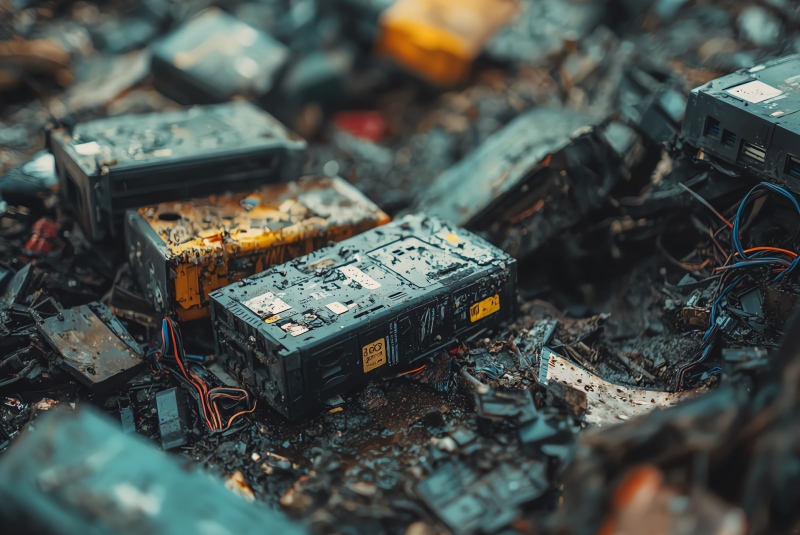
India's green revolution is not just about renewable power and electric vehicles anymore. Increasingly the conversation is now pivoting towards what happens to a product once it reaches the end of its life — material recovered, recycled, and infused back into the economy. That is where circularity carbon credits fit in, turning waste into value and de-risking supply chain embedded emissions.
Expanding the Scope: E-Waste, Battery Waste, Tyre Waste, and Solar Waste
India is the third-largest e-waste producer in the world and produces nearly 1.6 million tonnes of e-waste annually. Recycling of e-waste not only provides precious metals like copper, gold, and rare earths but also offsets emissions from energy-hungry mining. Circularity credits here can incentivise large-scale collection and formalisation of the sector.
Battery waste is another urgent frontier. By 2030, India could see 4.5 million tonnes of EV battery waste. Advanced recycling can recover up to 95% of lithium, cobalt, and nickel, directly cutting the lifecycle emissions of new batteries. Circularity credits can make such recycling financially viable and attractive for OEMs. Tyre waste, currently over 6 million tonnes annually, is mostly burned or disposed of in unsafe ways, causing air pollution and carbon leakage. Recycling tyres into crumb rubber or pyrolysis oil can significantly reduce emissions compared to virgin production. Credits linked to this process would not only help decarbonise transport but also create new value chains.
Tyre waste, currently over 6 million tonnes annually, is mostly burned or disposed of in unsafe ways, causing air pollution and carbon leakage. Recycling tyres into crumb rubber or pyrolysis oil can significantly reduce emissions compared to virgin production. Credits linked to this process would not only help decarbonise transport but also create new value chains.
Solar waste is the next big challenge as India’s solar capacity crosses 80 GW and panels begin reaching end-of-life. Recycling glass, aluminium frames, and rare metals from PV modules can generate circularity credits while securing raw materials for India’s ambitious renewable energy targets.
All four of these waste streams — tyres, batteries, solar panels, and e-waste — in addition to ELVs, are a multi-billion-dollar opportunity for circularity carbon credits in India.
Why Circularity Credits Matter
In contrast to traditional carbon credits that target avoided emissions or removals (e.g., afforestation), circularity credits address the secret, embedded emissions along supply chains. By facilitating material recovery and reuse, they directly cut the carbon footprint of steel, aluminium, plastics, and clean energy industries.
For OEMs and manufacturers, it translates into their capability to balance lifecycle emissions, increasingly standard under global ESG practice. For recyclers, it translates into a new source of income that makes circular recycling technology economical.
The Policy Imperative: Positive List and Article 6
In enabling India to capture this potential, circularity credits need to be made part of formal policy instruments.
1. Indian Carbon Market Positive List (ICM): The Ministry of Power and the Bureau of Energy Efficiency are building India's compliance carbon market. Inclusion of recycling and circularity projects in the positive list would open access of compliance-driven demand to recyclers, and that would bring scale.
2. Paris Agreement Article 6: As India negotiates its global carbon trade contribution, it should insist on including circularity projects (ELVs, e-waste, batteries, tyres, and solar waste) on its list of Article 6.2 cooperation. This will enable India to sell credits as Internationally Transferred Mitigation Outcomes (ITMOs), generate international demand, and develop India into a circular carbon solutions hub.
A Race India Can Win
India’s recycling sector already has the raw ingredients: a large scrap base, emerging formal recyclers, and government support for circular economy initiatives. With the right financial incentives through carbon markets, India can leapfrog to become a global leader in circularity credits.
From scrap to credits, the potential is obvious. Circular economy is no longer a vision for the future — it is a climate policy, an industrial strategy, and a market opportunity all in one. For India, the time to embed it into both domestic and international carbon frameworks is now.
"In contrast to traditional carbon credits that target avoided emissions or removals (e.g., afforestation), circularity credits address the secret, embedded emissions along supply chains."


